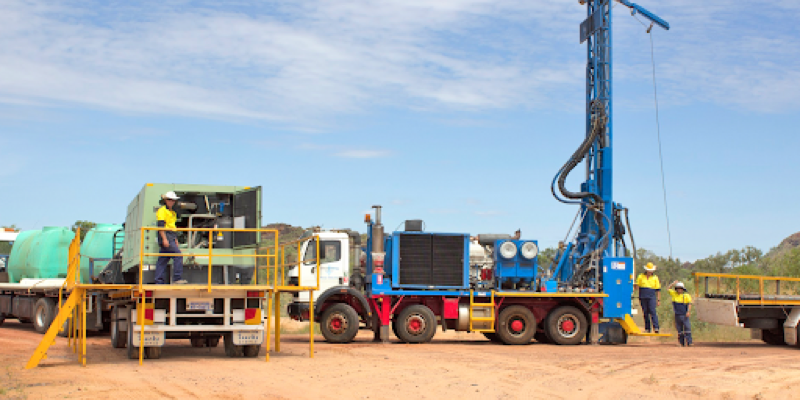Water Well Drilling

When drilling water wells, which is the better option, Rotary or DTH?
Having the right tools for the job is essential for successful water well drilling. Rotary bits can handle soft to medium soil formations, but when you find yourself between a rock and a hard place, you need specialised equipment designed to power through rock formations.
A down-the-hole hammer may be your solution. If you have ever hit rock bottom when drilling a water well, you know the value a DTH hammer brings to the table.
If you are undecided about whether a DTH hammer is right for you, consider a few things:
- They are easy to set up. DTH hammer needs only a 185cfm air compressor to work effectively. Compressors of this size are compact and portable, adding minimal burden to equipment transport. They also happen to be the most common size available at rental centres. Operators can drill even faster with the 3 inch hammer by using it with an air compressor that provides up to 375cfm.
- The cost of replacing drill bits adds up. Drag bits and various other bits can wear out prematurely when operators try to use them for applications or rock formations incompatible with that type of bit.
- You cannot do some jobs without one. Mud rotary and tricone bits easily drill through soft to medium soil formations, but quartzite, granite, basalt, limestone and sandstone are all too much for standard drill bits.
- You will need one when it is inconvenient. The nature of water wells is that they tend to be needed in remote or hard-to-access locations. In some instances, gaining access to the water well site is fairly simple. But in most cases, operators will not be travelling on clean, well-paved roads but rather transporting their rig over uneven terrain or unmaintained roads. This is especially true for portable drills that are often used to bring water to communities in developing countries — far from the nearest equipment supplier. Getting caught in such a location without the proper tool for the job could delay the project for weeks until another bit arrives or result in costly delivery expenses.
- They require proper anchoring. For heavy, trailer-mounted rigs, anchoring is not always necessary. But for compact, lightweight drilling equipment, anchoring stabilises the drilling platform and helps force drill bits and DTH hammers through soil and rock. Some drills require 30in-long anchors for drilling into clay, loamy and sandy soils. If the drill site is on rocky terrain, drillers must find alternative methods for anchoring the drills, such as placing water-filled tanks or barrels packed with rocks onto the unit. This anchoring force is crucial to pushing the DTH hammer, as well as heavy-duty drill bits, through rocky material.
- DTH hammers are air-powered with percussive operation, a design that allows the hammer’s carbide teeth to methodically shatter rock surfaces. In other words, it is like a small, spinning jackhammer that fits inside a borehole. Aided by the percussive power of the DTH hammer, hydraulic rigs can drill as deep as 300ft through hard rock formations. The DTH hammers, available in 2 3, 4, and 5in diameters are compatible with the full line of hydraulic drills.
Choosing the best drill for a water well is no easy task and matching it closely to the soil conditions can impact efficiency. Work with a manufacturer who will help you choose the ideal rig for your next project and consider a DTH hammer that will make you ready for rock.

